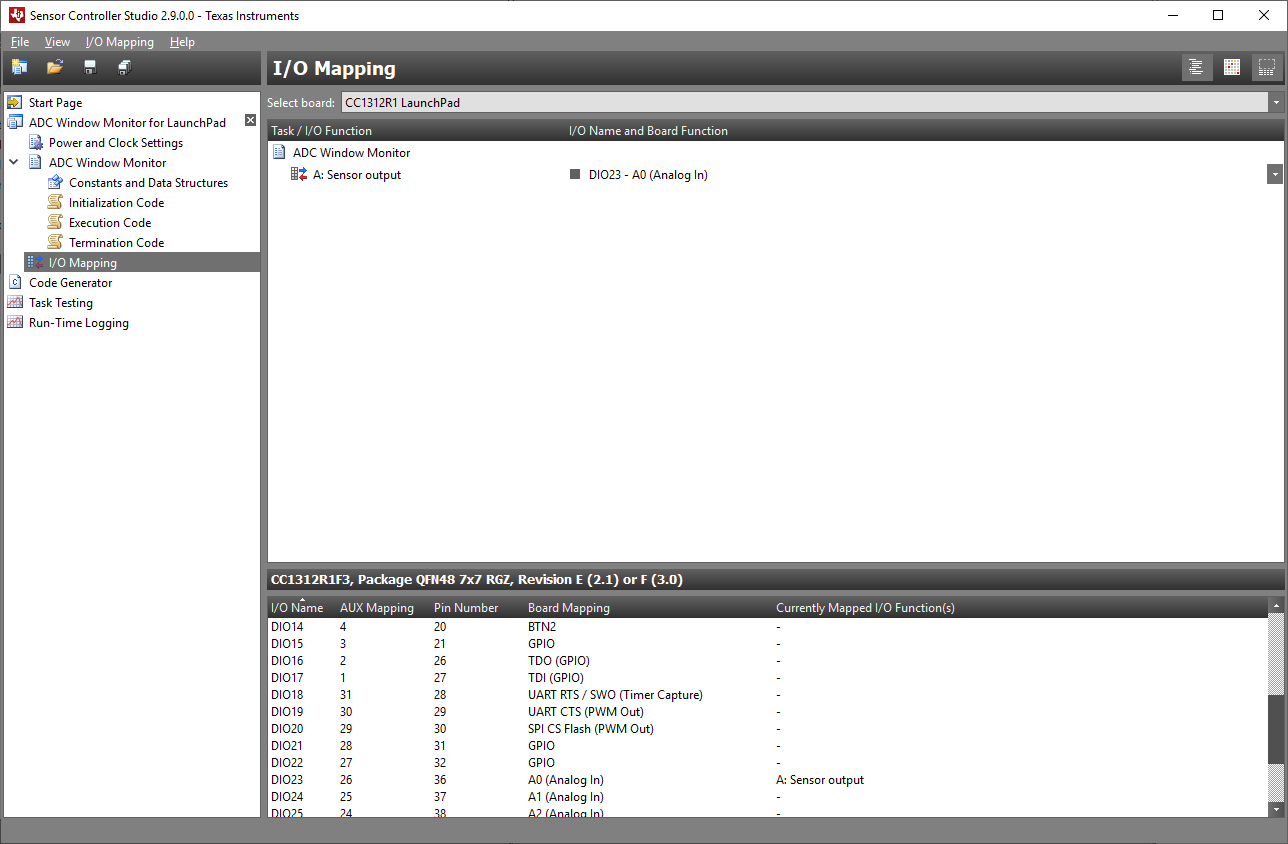SWRU439M October 2015 – April 2022
- Trademarks
- 1Introduction
- 2Overview
- 3Prerequisites
- 4Installation
- 5Sensor Controller Studio Tutorials
-
6Sensor Controller Studio Walkthrough
- 6.1 Start Page and Navigation
- 6.2 Documentation
- 6.3 Open the Example
- 6.4 Project Panel
- 6.5 Task Panel Settings
- 6.6 Constants and Data Structures Panel
- 6.7 Task Code Editor Panels
- 6.8 I/O Mapping Panel
- 6.9 Code Generator Panel
- 6.10 Compiling Example Applications in IAR or CCS
- 6.11 Task Testing Panel
- 6.12 Run-Time Logging Panel
- 7References
- 8Revision History
6.8 I/O Mapping Panel
The I/O mapping panel is used to map the I/O functions enabled in the task panel to DIO pins on the selected target chip. The generated SCIF driver performs all necessary configuration for these pins (see Figure 6-8).
 Figure 6-8 I/O Mapping
Panel
Figure 6-8 I/O Mapping
PanelUse the board selection to ease the I/O mapping.
There are two I/O mapping views:
- List mode (default): Select I/O pins for each I/O function from the drop-down lists
- Grid mode: Click on the cells in the grid to map I/O pins to I/O functions
Press Ctrl+Tab to switch view.
It is possible to share I/O pins between Sensor Controller tasks. For more details, see the panel help documentation.